Do you have a question about the JBL PROFLORA CO2 CONTROL and is the answer not in the manual?
Lists and describes all components of the JBL PROFLORA CO₂ CONTROL device.
Instructions on how to mount the control unit onto a top-hat rail.
Steps for connecting pH/temperature sensors, solenoid valve, and power supply.
Steps to prepare for initial start-up, including calibration liquids and sensors.
How to select the desired language for the device's menu navigation.
Detailed instructions for performing a two-point calibration of the pH sensor.
Explains the device's sleep mode and the information displayed in the value overview.
Guide to adjusting the pH set point, recommending the auto pH menu.
Explains how the device controls CO2 supply based on set point and hysteresis.
Discusses the relationship between CO2, KH, and pH, recommending target values.
Guidance on how to individually adjust the CO2 supply for an aquarium.
Steps to access and change the device's menu language.
Accessing the calibration function and information about calibration reminders.
Setting intervals for calibration reminders.
How to manually set the desired pH value for control.
Using KH to automatically calculate and set the optimal pH set point.
Setting hysteresis to prevent frequent switching of the solenoid valve.
Selecting the operating mode (auto, manual open, manual shut) for the solenoid valve.
Configuring pH and temperature alarm limits and notification types.
Adjusting the display brightness level.
Adjusting the display contrast level.
Locking/unlocking the device controls with a password.
Displaying software version and serial number for service purposes.
Restoring the device to factory default settings.
Details on calibration process, accuracy, and error messages.
How the display returns to the value overview if no key is pressed.
How the display dims after inactivity and how to wake it.
Instructions for cleaning the device surface safely.
How power failures affect stored values and calibration reminders.
Specific application for marine aquariums with calcium reactors.
Guidelines for careful handling and maintenance of the pH sensor.
Information on pH sensor ageing and factors affecting its lifespan.
Proper handling and usage of calibration buffer solutions.
Lists specifications and technical details of the device.
Details of the manufacturer's warranty terms and conditions.
Lists and describes all components of the JBL PROFLORA CO₂ CONTROL device.
Instructions on how to mount the control unit onto a top-hat rail.
Steps for connecting pH/temperature sensors, solenoid valve, and power supply.
Steps to prepare for initial start-up, including calibration liquids and sensors.
How to select the desired language for the device's menu navigation.
Detailed instructions for performing a two-point calibration of the pH sensor.
Explains the device's sleep mode and the information displayed in the value overview.
Guide to adjusting the pH set point, recommending the auto pH menu.
Explains how the device controls CO2 supply based on set point and hysteresis.
Discusses the relationship between CO2, KH, and pH, recommending target values.
Guidance on how to individually adjust the CO2 supply for an aquarium.
Steps to access and change the device's menu language.
Accessing the calibration function and information about calibration reminders.
Setting intervals for calibration reminders.
How to manually set the desired pH value for control.
Using KH to automatically calculate and set the optimal pH set point.
Setting hysteresis to prevent frequent switching of the solenoid valve.
Selecting the operating mode (auto, manual open, manual shut) for the solenoid valve.
Configuring pH and temperature alarm limits and notification types.
Adjusting the display brightness level.
Adjusting the display contrast level.
Locking/unlocking the device controls with a password.
Displaying software version and serial number for service purposes.
Restoring the device to factory default settings.
Details on calibration process, accuracy, and error messages.
How the display returns to the value overview if no key is pressed.
How the display dims after inactivity and how to wake it.
Instructions for cleaning the device surface safely.
How power failures affect stored values and calibration reminders.
Specific application for marine aquariums with calcium reactors.
Guidelines for careful handling and maintenance of the pH sensor.
Information on pH sensor ageing and factors affecting its lifespan.
Proper handling and usage of calibration buffer solutions.
Lists specifications and technical details of the device.
Details of the manufacturer's warranty terms and conditions.
| Temperature range | 0 - 50 °C |
|---|---|
| Temperature Measurement Range | 0 - 50 °C |
| CO2 Control | Yes |
| Power Consumption | 5 W |
| Type | CO2 Controller |
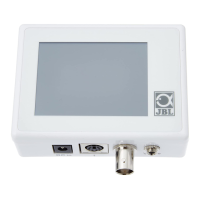
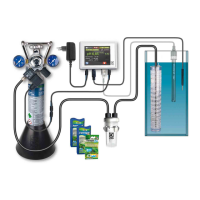

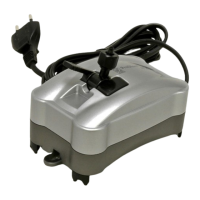
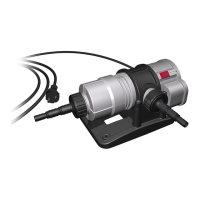


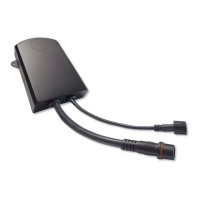
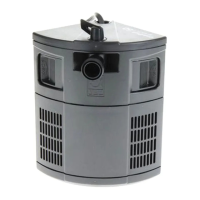

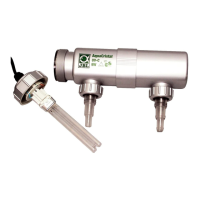

